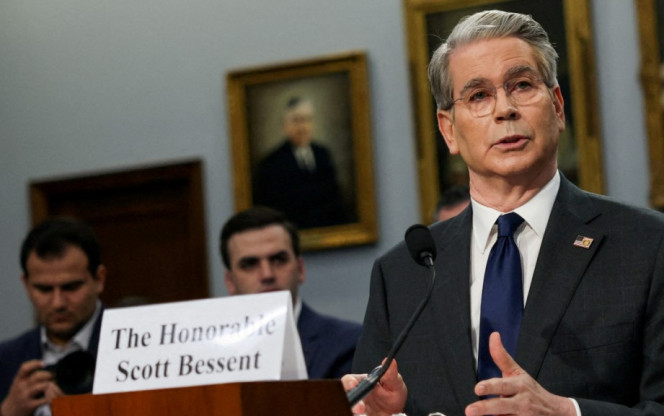China Invests in Morocco; Xi-Putin Meeting Reaffirms Sino-Russian Alliance; US-China Trade Talks Continue; India-Pakistan Tensions; US to Negotiate Tariffs Reduction with Some Countries; Latest Updates within China
In recent days, several significant developments have emerged regarding China's role in the global economic and political landscape.
China's Investment in Morocco: Economic Expansion or Strategic Alliance?
A recent article from the New York Times Chinese edition discusses China's significant investment in opening a factory in Morocco. This move is not merely about economic benefits but also about enhancing China's influence in the African region. The article highlights China's broader strategy of expanding its Belt and Road Initiative (BRI), which aims to develop trade networks and infrastructure projects internationally. The emphasis is on creating a global presence that not only promotes economic growth but also strengthens diplomatic ties. By choosing Morocco, China is seizing an opportunity to leverage Morocco's geographic advantage as a gateway to Europe and Africa, and fortifying its economic foothold in these regions.
This kind of investment often comes with strategic political aspirations. China's growing influence in Africa may be viewed as both a strategic investment and a geopolitical maneuver to counterbalance Western influence. While the economic incentives are clear, the broader geopolitical intentions reflect China's ambition to realign global alliances towards a more multipolar world.
Xi-Putin Meeting: Reaffirming the Sino-Russian Alliance
The meeting between Chinese President Xi Jinping and Russian President Vladimir Putin highlights the strengthening partnership between the two nations. Emphasizing shared histories and future collaboration, both leaders are intent on enhancing bilateral ties. According to The Paper, Xi stated the importance of deepening Sino-Russian relations as a nod to historical friendships and for promoting global governance reform. Meanwhile, Sina elaborated on the geopolitical stance, depicting a united front against unilateralism.
Different publications emphasize varying aspects of the meeting. While The Paper underscores historical and ideological associations, Sina focuses on the current geopolitical landscape and challenges to international order. Such distinctions reveal the complex dynamics within a bilateral relationship positioning itself against perceived Western hegemony.
Internationally, these developments may cause concern among Western nations, wary of strengthening Sino-Russian relations as both countries jointly oppose U.S. influence and promote multipolarity.
U.S.-China Trade Talks: A Long Road Ahead
According to the United Daily News, the much-anticipated U.S.-China trade talks are set to resume, potentially easing the trade tensions that have plagued bilateral relations. However, the article notes that both sides remain cautious, reflecting on the protracted trade negotiations from seven years ago which lasted over a year and a half. The complexities of the current global economic landscape, coupled with domestic political pressures in both countries, suggest these new talks may also be protracted.
What stands out is the acknowledgment of mutual economic interdependence despite political differences. The story underscores the economic realities both nations face, which act as a counterbalance to political posturing. Should these talks progress, they could pave the way for more stable economic relations amid a shifting geopolitical landscape.
Implications of the India-Pakistan Weapons Trade
The New York Times highlights a notable escalation in arms trades between India and Pakistan. This is largely perceived as a reflection of the deep-seated tensions and the role external powers play in this regional rivalry. China, a key partner for Pakistan, and the U.S., an ally of India, both play significant roles in this dynamic, complicating their bilateral relations with each other.
This arms race is symptomatic of broader geopolitical strategies, where military engagements can shift balances of power. The resulting ripple effects impact global security dialogues, highlighting the interconnectedness of regional conflicts with global diplomatic engagements.
Trump's Tariff Strategy: Global Trade Dynamics
The BBC reports on President Trump's intentions to negotiate tariff reductions with several countries, including the UK. This development is particularly noteworthy amidst ongoing tariff discussions between the U.S. and China. By potentially lowering tariffs with allies, the U.S. seeks to strengthen its trade networks, simultaneously applying pressure on China in the ongoing trade negotiations.
This strategy reflects the complexities of modern global trade politics, where bilateral negotiations are leveraged to influence multilateral trade outcomes. The dynamic interplay of these discussions can significantly alter economic dependencies and alliance structures globally.
Housing Policy and Economic Implications
Recent adjustments to personal housing provident fund loan interest rates reflect a significant policy shift in China's economic strategy. Cities like Beijing, Shanghai, Guangzhou, and Shenzhen have seen reductions in loan rates to boost the housing market. As reported by The Paper, these changes are meant to ease the financial burden on homebuyers and stimulate economic growth.
The consistent narrative across different regions mirrors a coordinated national strategy aimed at stabilizing the real estate market. These economic adjustments signify the Chinese government's proactive role in employing monetary policy to navigate economic slowdowns amid the global financial climate. While beneficial for Chinese citizens, such moves point to China's broader economic resilience.
Healthcare Reforms and Aging Population
The push for establishing geriatric departments in comprehensive hospitals is a response to the aging population. Under new guidelines from the National Health Commission, higher-tier hospitals are encouraged to open specialized departments for elder care (source: The Paper). Reforms aim to improve early disease detection and management for the elderly population.
This policy reflects the Chinese government's acknowledgment of demographic shifts and the need for systemic healthcare reforms to address the increasing proportion of elderly citizens. Such changes are critical for maintaining the social fabric as the nation transitions towards a healthcare system that is better equipped to handle elder-specific ailments.
Educational Strategies and Opportunities for Graduates
China's education sector is undergoing significant reforms to accommodate new graduates. The Ministry of Education and related departments are focusing on recruitment in primary and secondary schools. According to CCTV, specific targets include high-need areas such as AI, health, and physical education.
The concurrent initiative with the National Development and Reform Commission emphasizes developing teacher capabilities. These reforms propose innovative models for teacher education, aiming to enhance skill sets relevant to modern educational challenges. By aligning graduate opportunities with national priorities, China creates pathways for talent acquisition while addressing educational disparities across regions.



